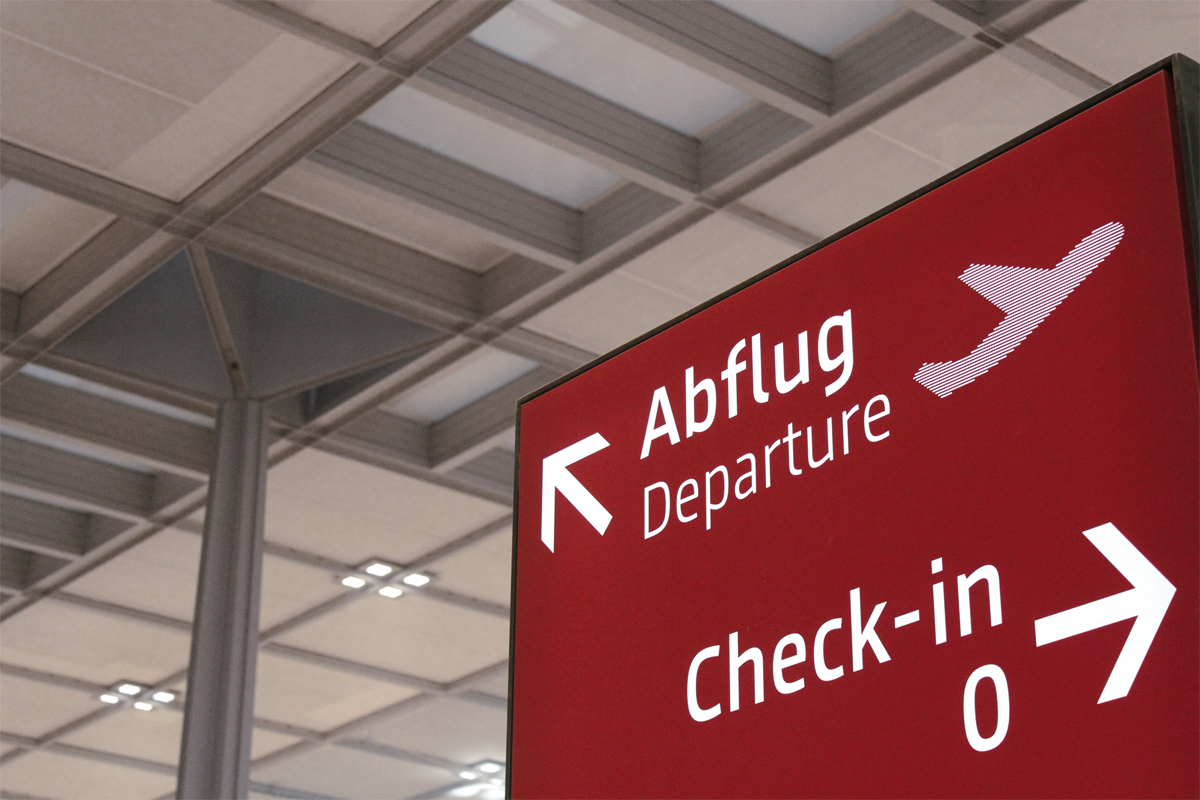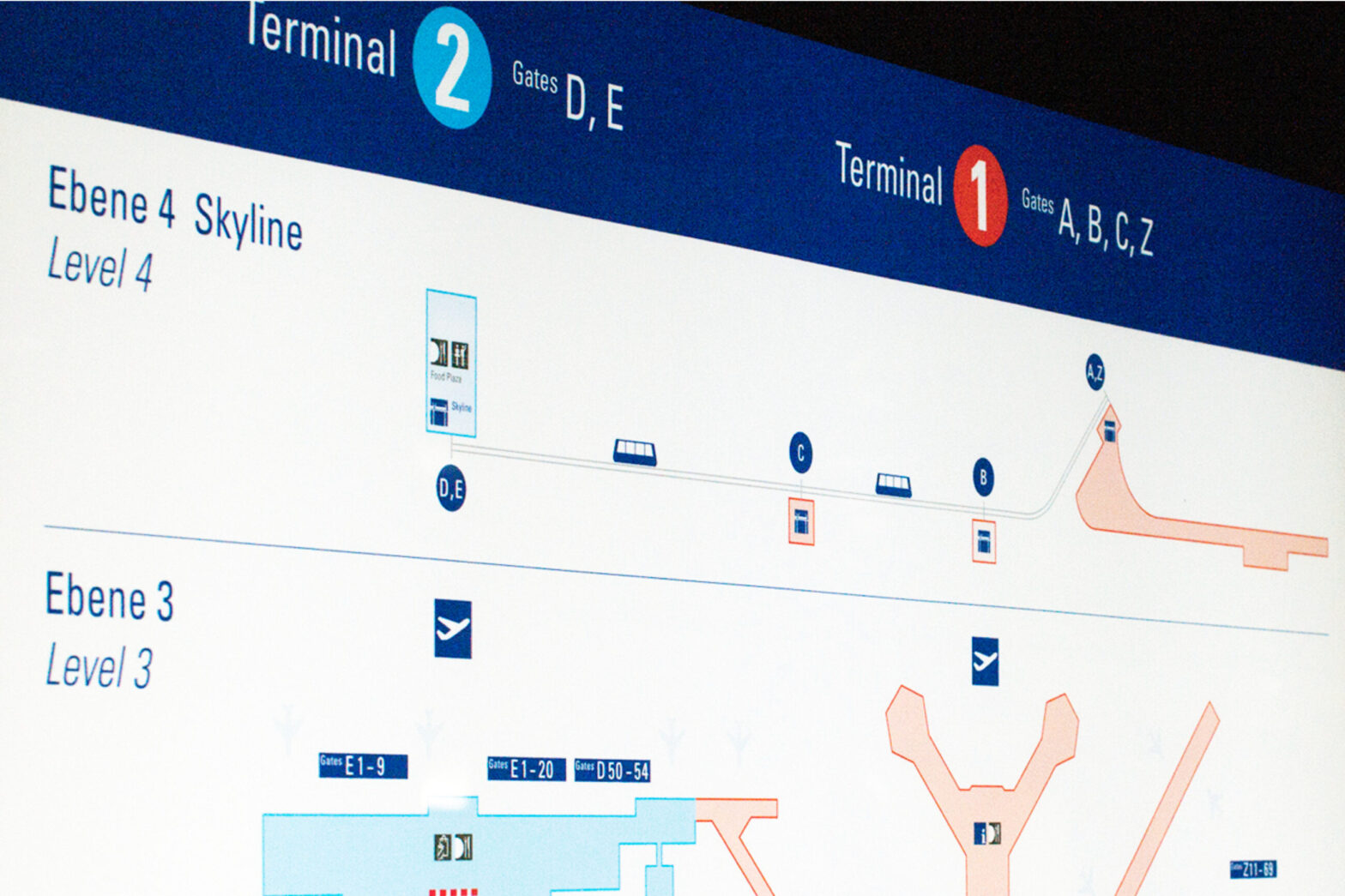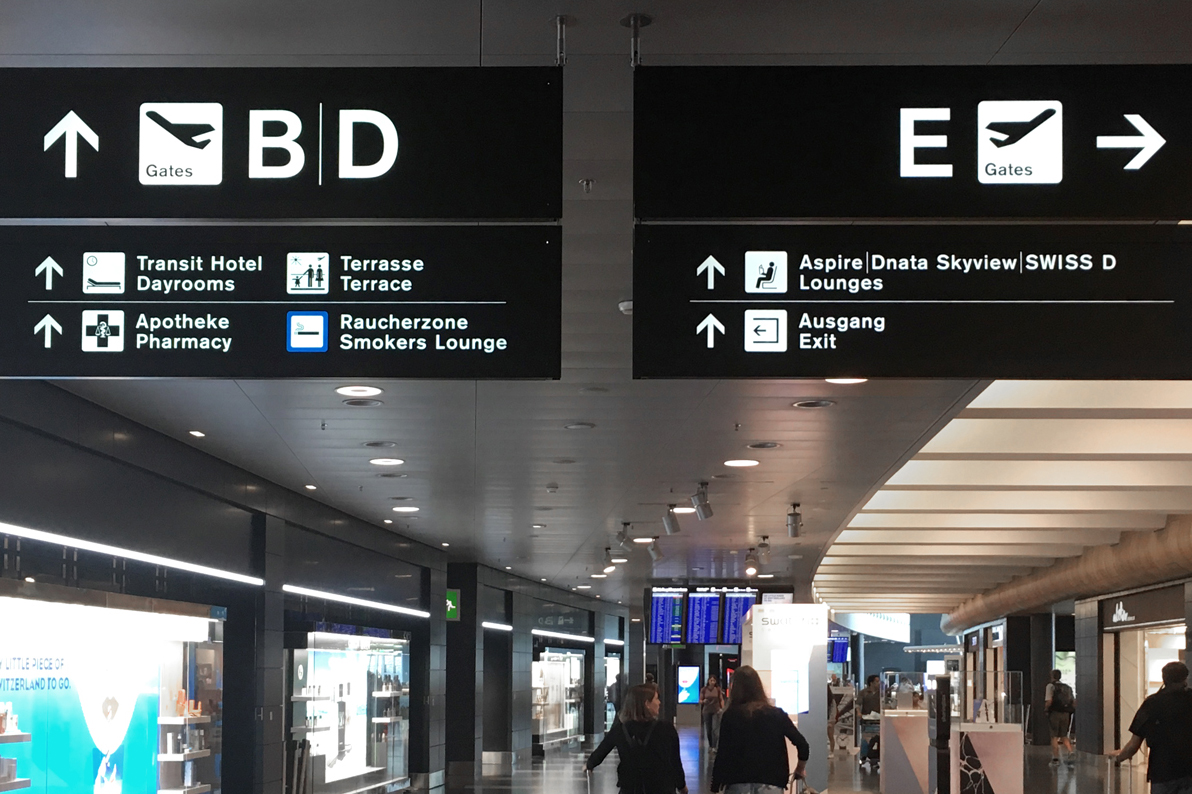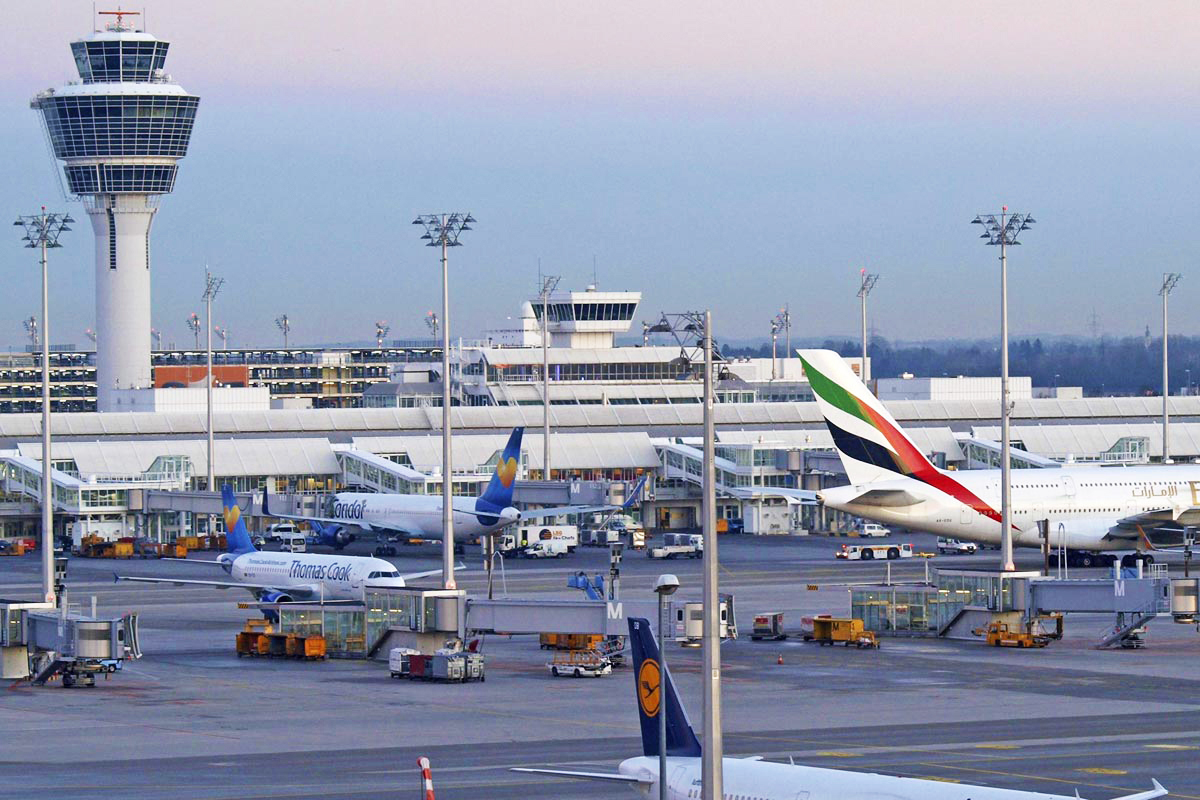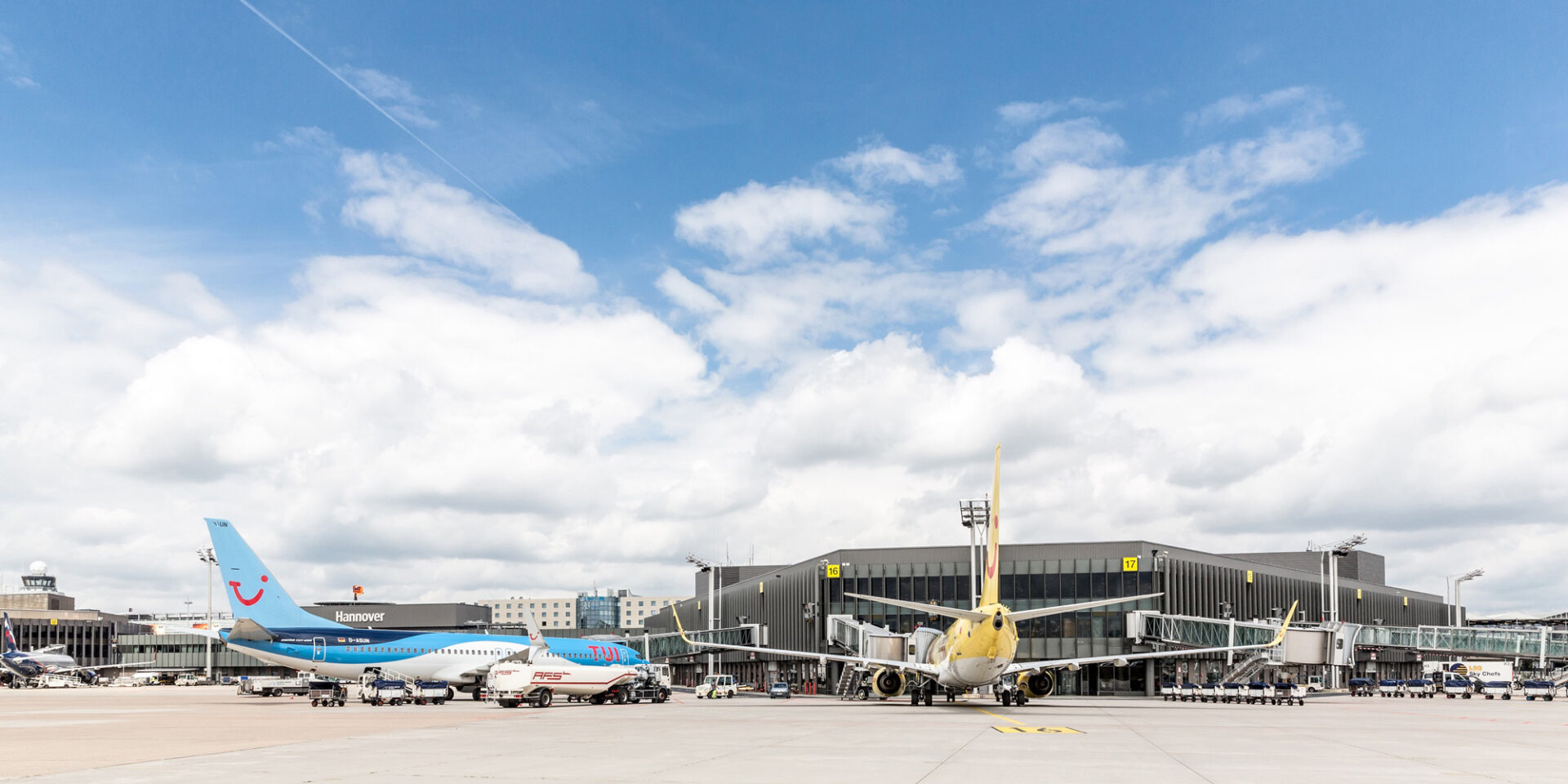
Hannover Airport
Creating a seamless wayfinding for Hannover Airport
Hanover Airport is undergoing a rebuild – while it is still in operation. In future, an airside corridor will connect Terminals A, B and C. The comprehensive modernization also includes the renewal of the guidance and orientation system.
Changed passenger routes, more services and offers as well as the digitalization of the guidance system are the challenges Moniteurs is facing.
Wayfinding and orientation system
since 2018
Client
Hannover Airport
Capacity PAX per year
6,4 million
Cover photo
Hannover Airport

What role does digital transformation play in passenger orientation?
Starting with an analysis of the current situation and a joint workshop, Moniteurs first develops a recommendation for action. In this, criteria and goals for the new guidance and wayfinding concept were developed.
The aim is to make the digital and analogue quality of experience equal. The transitions between the two worlds should be as fluid as possible and should not show any discrepancies in content or design.
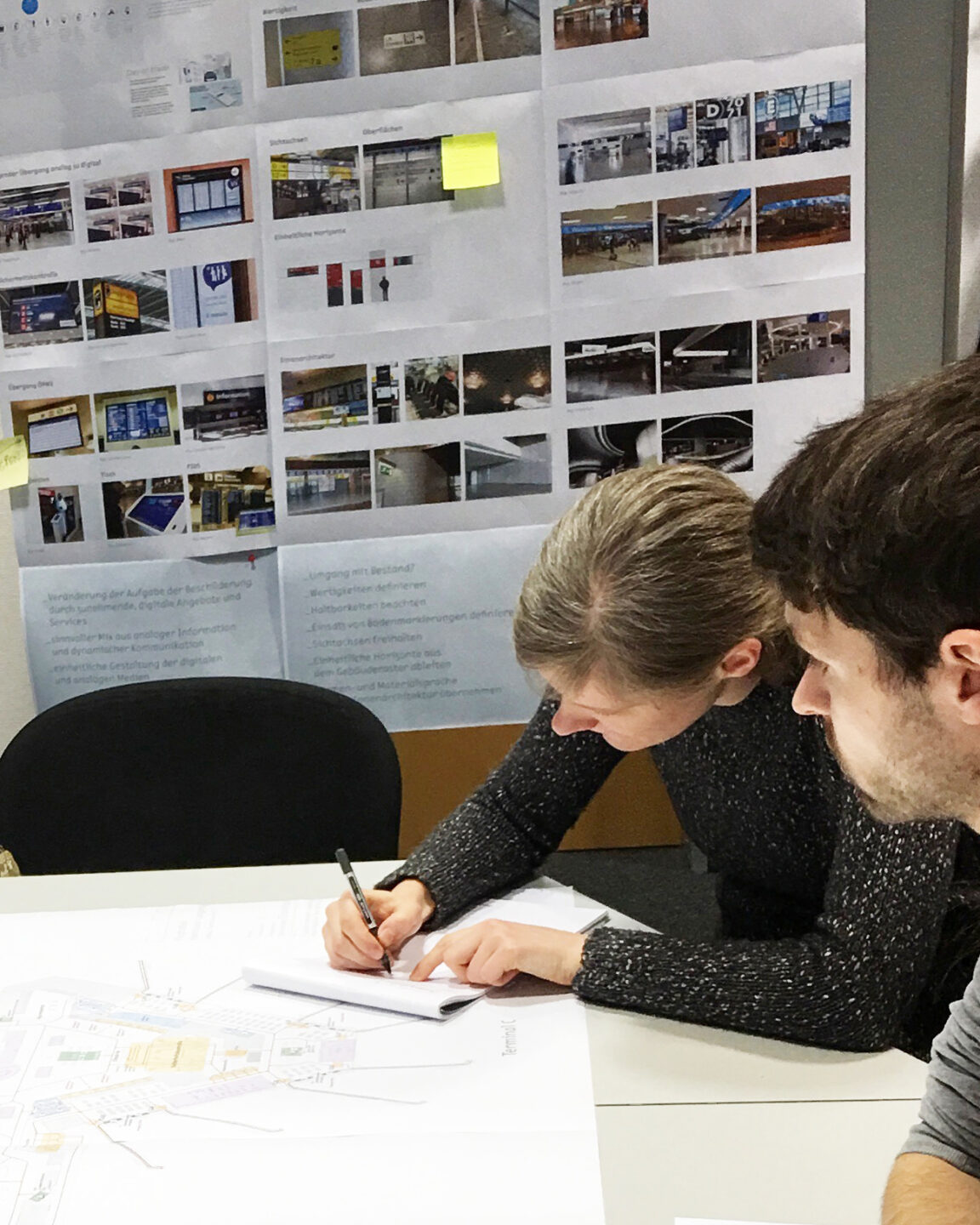
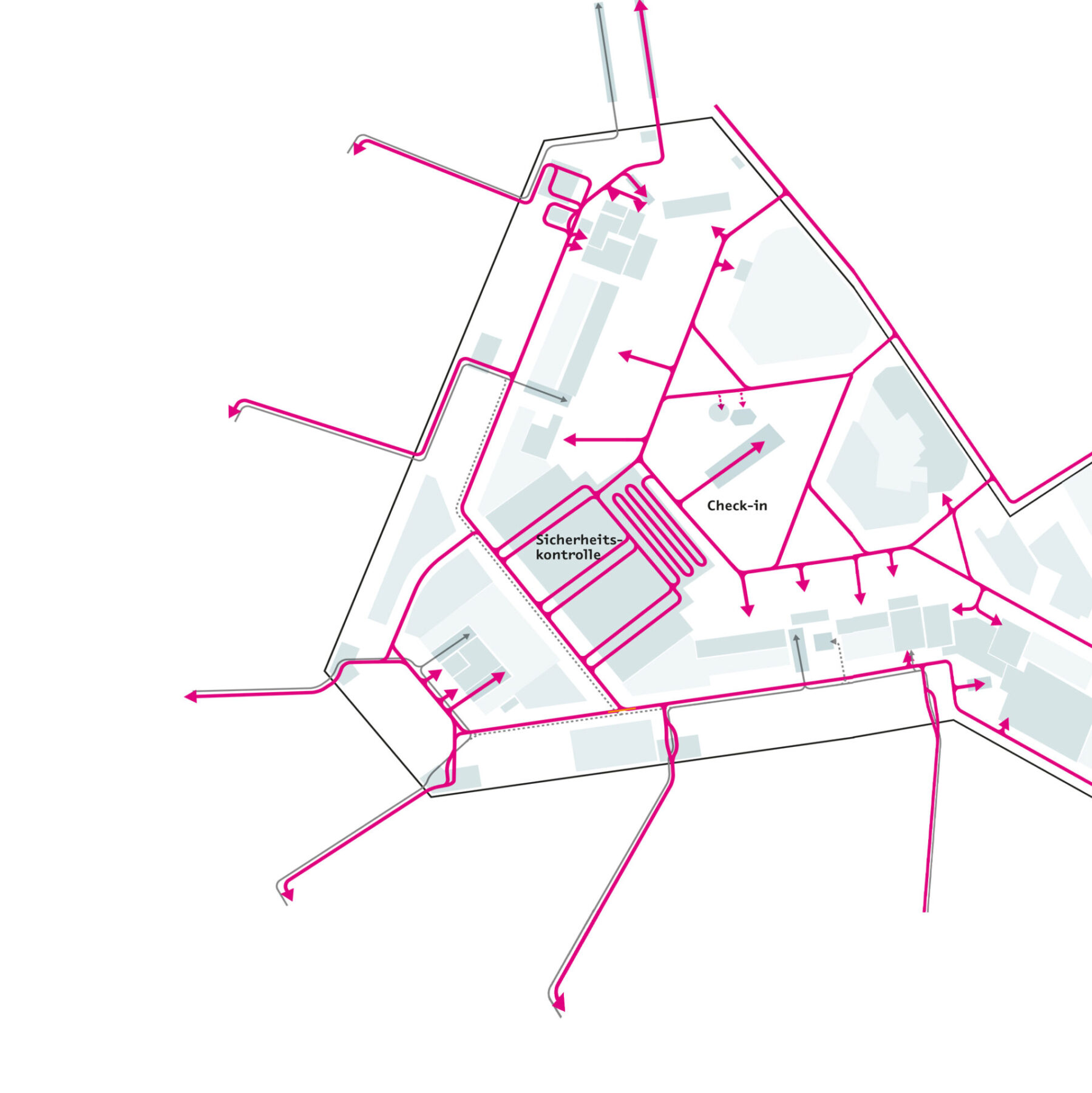
What influence does new user behaviour have on orientation?
The investigation of passenger flows and the analysis of specific situations on the basis of concrete user stories enables the optimisation of the guidance and orientation system within the framework of the new requirements. A comprehensive, database-supported inventory, which was previously carried out by Moniteurs, makes it possible to fundamentally revise the design concept and all sign locations and to design an optimal, user-centered Passenger Journey.
Wayfinding for …




Summary
Moniteurs develops a sustainable, flexible system. The new orientation concept facilitates the rough orientation of passengers between the terminals. User-friendly information guides passengers to their gates. Transitions between analogue and digital signage will be smooth. The structural changes will make the paths more versatile. These will be clearly described by dynamic, digital signage.

